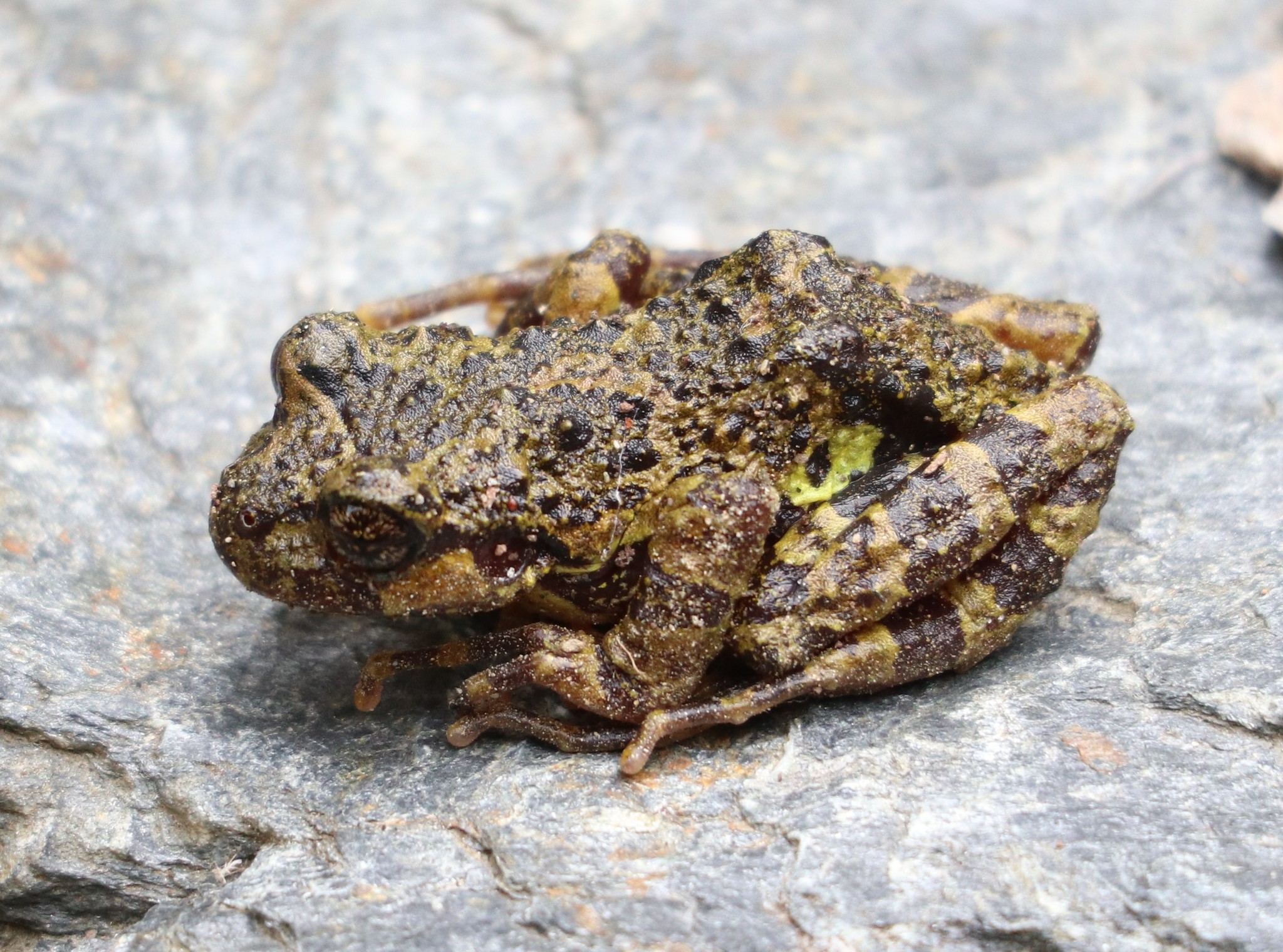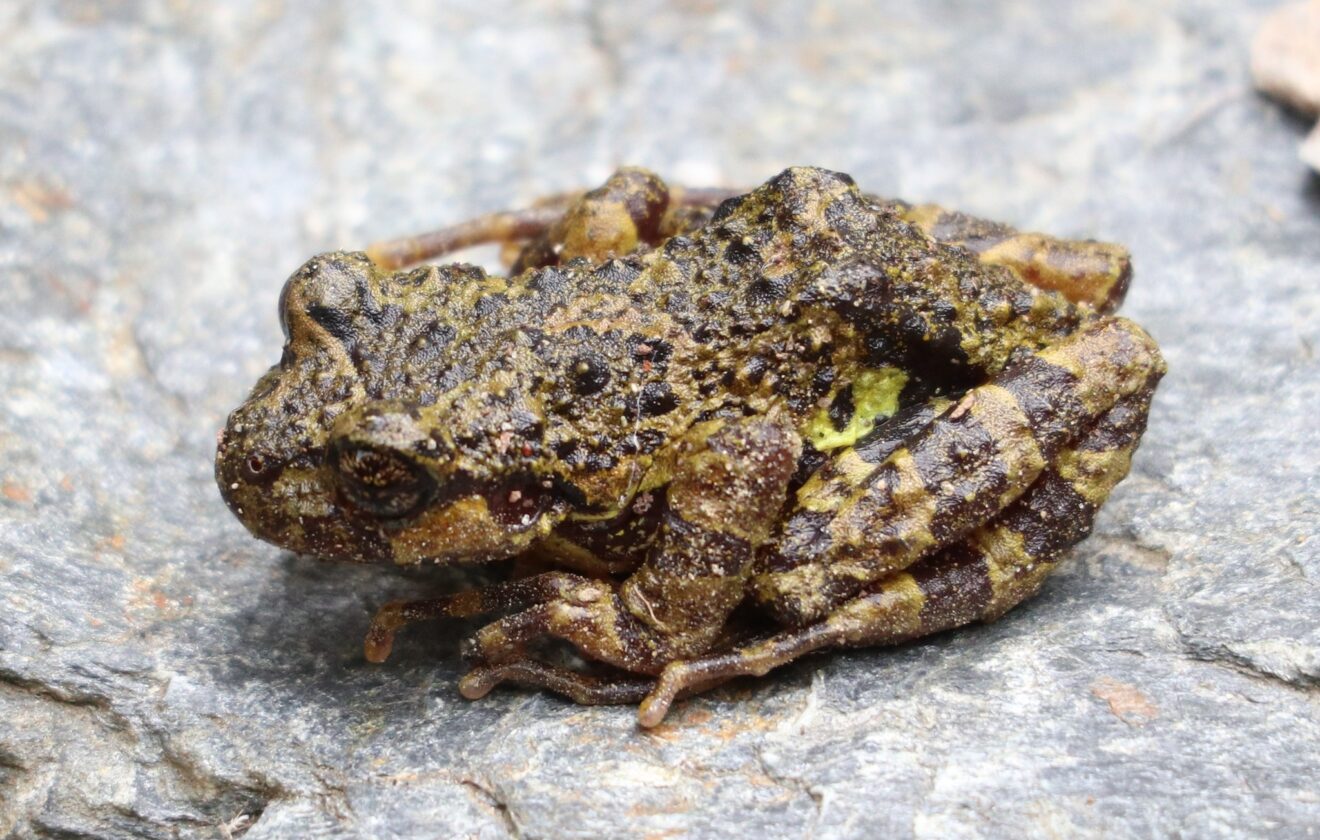Batrachyla antartandica: The Enchanting Amphibian of Patagonia’s Forests#
Deep within the mystifying temperate rainforests of Southern Chile and Argentina, nestled amongst emerald ferns, moss-cloaked logs, and mist-veiled thickets, lives a discreet yet fascinating creature—Batrachyla antartandica. Known commonly as the Magellanic forest frog, this diminutive amphibian species embodies the quiet mystery of southern Patagonia’s wilderness. A master of concealment and adaptation, Batrachyla antartandica remains relatively unknown to all but specialized herpetologists and passionate nature enthusiasts. Yet, beneath its humble exterior lies a compelling combination of biological traits, ecological importance, and critical insights into the health of one of our planet’s most precious ecosystems.
Indeed, the Magellanic forest frog isn’t merely a small component of its environment—it’s an essential anchor species influencing food webs, maintaining ecological balance, and serving scientists as an invaluable sentinel organism in tracking environmental changes and ecosystem integrity. Read on to uncover the surprising secrets and astonishing adaptations of this elusive amphibian.
Taxonomy and Classification#
Batrachyla antartandica is a member of the family Batrachylidae, which is predominantly found in temperate ecosystems of southern South America. Within its family, the genus Batrachyla is composed of species specially adapted to the cool, wet climates characteristic of Chile’s temperate rainforests and Argentina’s Patagonian coasts. Classified and described scientifically by Formas in 1997, this particular species remains intriguing for its relatively cryptic lifestyle and challenging observation conditions, which have contributed to its limited public awareness.
Its closest relatives within the genus are similarly small and elusive frogs whose evolutionary success hinges upon their remarkable ecological specializations, a testament to the unique biodiversity and resilience of southern temperate ecosystems.
Natural Habitat#
The natural kingdom of Batrachyla antartandica encompasses a spectacularly lush biome: the Valdivian temperate rainforests and Magellanic subpolar forests of Chile and Argentina. Within this mesmerizing landscape sprawling across valleys and fjord-lined coastlines, these frogs thrive in moist, cool conditions—often associated with freshwater systems, boggy wetlands, riparian regions, and dense leaf litter layers.
Picture a realm with near-constant dampness, shaded by dense canopies of southern beeches, conifers, and evergreen broad-leaved trees, where carpets of moss and lichens provide cover perpetually bathed by mist and drizzle. Here, beneath fallen logs and among wet, layered leaves—often obscured from view—the Magellanic forest frog makes a cryptic abode, perfectly adapted for survival in a region where ruggedness and refinement meet in nature’s poetry.
This frog is more than simply adapted to moisture and cool temperatures—it depends on such conditions. Forests without appropriate humidity and leaf-litter layers provide little refuge, emphasizing the sensitivity of this amphibian to habitat quality and stability.
Physical Characteristics#
At a casual glance, Batrachyla antartandica blends seamlessly into its environment—barely distinguishable from fallen bark or moss-covered stones. Growing no larger than 4–5 centimeters in length, this species embodies subtle elegance through its cryptic coloration, nuanced combinations of deep browns, greens, and grays interspersed with darker markings, subtle flecks, and mottled patterns. This effective camouflage enables it to remain virtually invisible among the damp leaf litter, mosses, and woody debris of the forest floor.
The frog’s skin texture appears finely granular, adding another dimension to its visual disguise. Large, rounded eyes positioned slightly dorsally facilitate vigilance for predators. Their slender limbs and feet, equipped with modest webbing, are perfected for their semi-aquatic life—allowing dexterity on land and ease in shallow waters.
One uniquely fascinating adaptation of Batrachyla antartandica is their physiological adjustment to cold climates. Unlike many amphibians that struggle to survive at low temperatures, this species thrives perfectly in Patagonia’s chill, aiding its continued persistence in regions where most tropical frogs couldn’t endure.
Behavior and Life Cycle#
The Secretive Hunter#
Magellanic forest frogs emerge from their hiding spots largely during humid nights or misty twilight hours. They primarily rely upon their acute senses of sight and vibration detection to capture prey. They expertly hunt small invertebrates—flies, beetles, ants, spiders, and larvae found abundantly within leaf litter or near bodies of fresh water. Precise and patient, their hunting style involves agile hops and swift tongues flicked deftly to capture even the most elusive prey.
Mating Rituals and Tadpole Development#
Mating behaviors of Batrachyla antartandica occur mostly in early spring, a time when melting snow and increasing rains fill ephemeral pools and streams—a perfect nursery for new generations. During evening rainfalls, males begin melodic choruses of gentle, resonant calls, delicate vocalizations that drift softly through the misty woodland.
Once paired successfully, females deposit clusters of gelatinous eggs carefully concealed in shallow water bodies, often tucked beneath fallen logs or thick vegetation. Tadpoles emerge with remarkable resilience, swiftly adapting to their freshwater habitats. Their larvae possess adaptations including transparent tail fins and coloration closely matching the muddy substrate—protecting them from an array of aquatic predators. As tadpoles mature, they slowly transition to terrestrial habitats, completing a successful metamorphosis into miniature adults ready to tackle the challenges of Patagonian life.
Ecological Role#
Although small in stature, Batrachyla antartandica holds outsized ecological significance. Acting as both predator and prey, they form critical junction points within the delicate food web of Patagonia’s forests. They regulate insect and arthropod populations essential for balancing vegetation growth and providing ecosystem stability.
Additionally, their presence signals environmental health. Amphibians are famously sensitive to environmental disturbances, so a healthy population of these frogs acts as a natural indicator of ecosystem integrity, alerting ecologists to ecological shifts and environmental stress.
Threats and Conservation Status#
Like so many amphibians worldwide, Batrachyla antartandica faces ongoing threats—pristine habitats are vulnerable to habitat destruction through logging, agricultural expansion, and the growth of urban settlement boundaries. Climate change also looms as a significant threat, affecting precipitation patterns and modifying essential freshwater breeding habitats.
Fortunately, due to remote habitats that are relatively intact, these Patagonian frogs are currently classified as Least Concern by the International Union for Conservation of Nature (IUCN). However, ongoing monitoring is imperative to identify emerging threats, address conservation priorities, and implement sustainable practices before populations suffer irreversible declines.
Cultural and Scientific Significance#
Beyond their ecological value, these frogs inspire curiosity, awe, and appreciation among local naturalists, researchers, and indigenous communities. Stories abound among southern Patagonian peoples—legends that describe small amphibians inhabiting the hidden ponds of ancient forests, representing life, renewal, and the healthy state of nature.
Scientifically, Batrachyla antartandica proves invaluable as an indicator species and embodies bioindicator potential, highlighting broader ecological changes occurring unseen and unrecorded elsewhere in Earth’s remote forest corners.
Conclusion#
The Magellanic forest frog, Batrachyla antartandica, exemplifies the wonder and subtlety hidden within Patagonia’s lush temperate rainforest ecosystems. Though small and secretive, its presence resonates deeply in ecological and cultural dimensions. Protecting its habitats and securing its future is more than conserving a single species—it symbolizes the preservation of a fragile, intricate tapestry of life and biodiversity. Let these enchanting animals remind us of our responsibility to safeguard their forests, as stewards responding thoughtfully to nature’s delicate whisper. Engage further, advocate for conservation, and deepen your exploration of Patagonia’s remarkable amphibians—each insight gained is a step towards ensuring their continued survival.








